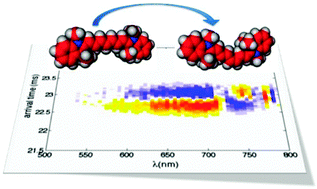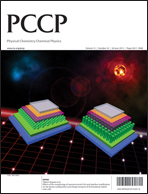A new approach for studying the photoisomerization of molecular ions in the gas phase is described. Packets of molecular ions are injected into a drift tube filled with helium buffer gas, where they are irradiated with tunable laser light. Photoisomerization changes the ions' cross section for collisions with helium atoms so that they arrive at the ion detector slightly earlier or later than the parent ions. By monitoring the photo-isomer peak as a function of laser wavelength one can record an action spectrum that is related to the ions' absorption spectrum modulated by the photoisomerization probability. The approach is demonstrated using the polymethine dye HITC (1,3,3,1′,3′,3′-hexamethylindotricarbocyanine). The data show that both trans and cis forms of HITC+ exist in the gas phase with trans → cis photoisomerization predominating over the 550–710 nm range and cis → trans photoisomerization occurring over the 735–770 nm range. The gas-phase photoisomerization action spectrum is comparable to the absorption spectra of trans HITC and cis HTIC in the condensed phase, but with the absorption peaks shifted to shorter wavelength. The gas-phase photoisomerization action spectrum of the (HITC)22+ dication dimer is also reported. (HITC)22+ cations photoisomerize over the 550–770 nm range to form more compact structures.

You have access to this article
 Please wait while we load your content...
Something went wrong. Try again?
Please wait while we load your content...
Something went wrong. Try again?


 Please wait while we load your content...
Please wait while we load your content...